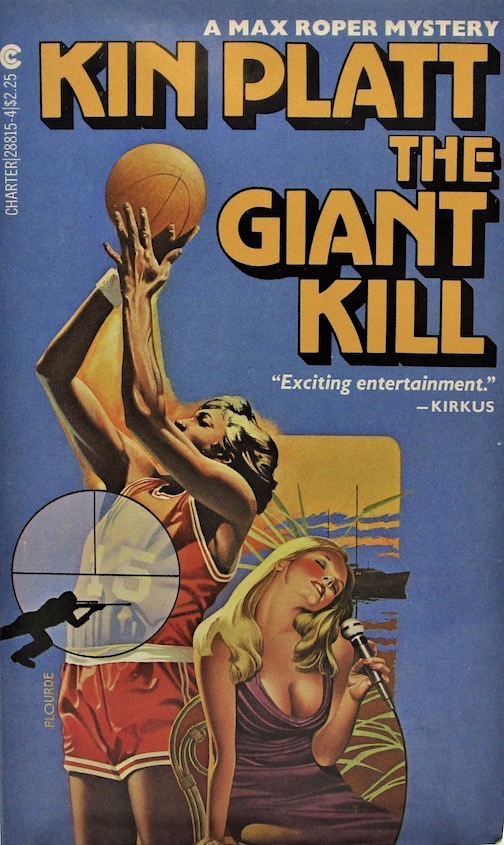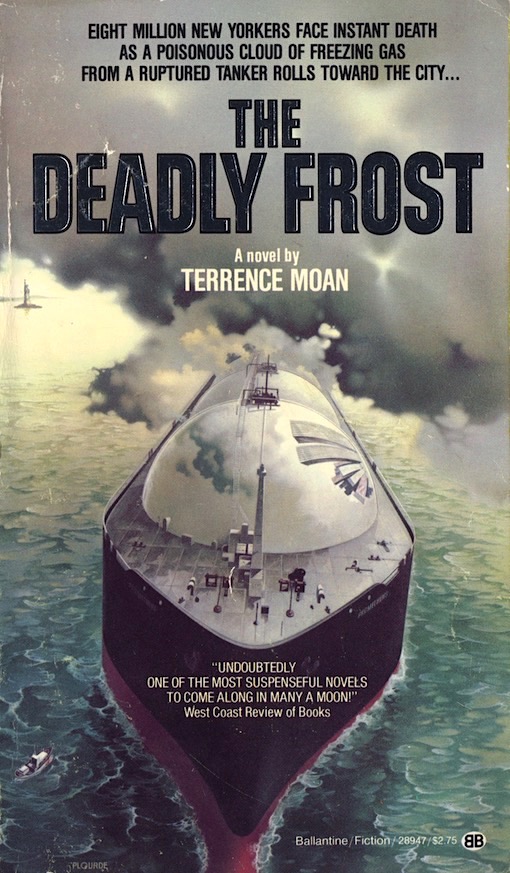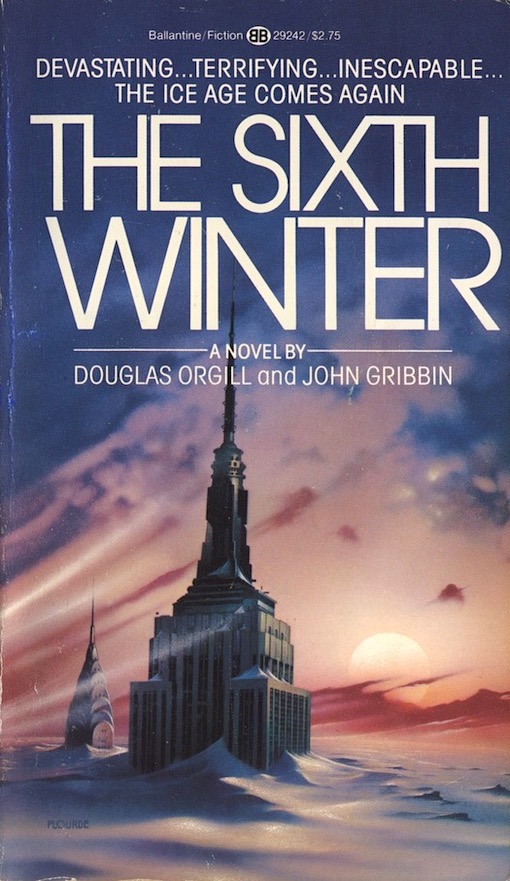'Dreams Turn To Terror. It's summer. The circus is coming to town. And in the shadows of the gaily-painted wagons lurks an ancient and evil creature whose inhuman lusts will shatter forever the peace of a small Kansas community...'
WHEN I read BLIND VOICES back in 1978 it seemed to strike a
permanent chord in me. Its characters were young and weird, I was young
and weird. It featured a carnival freak show, my family was a carnival
freak show (well not really, but you know what I mean).
Published posthumously in hardcover by Berkley Putnam that same year, Tom Reamy's only published novel went on to be a finalist for the Hugo, Nebula, and BSFA Awards for Best Novel. All very remarkable considering it was released in exactitude from a not final draft, and one with its share of shortfalls. But, just like everyone else, I loved it nonetheless.
I also loved the jacket art by David Plourde. This was my first awareness of his existence even though he had been producing book and magazine covers all throughout the 1970's. Plourde would continue to do so in New York for at least another fifteen years until he apparently packed up and moved to sunny Austin, Texas, to teach art and illustration at the University of Texas, then painting instruction at the Austin Community College, and then life drawing at the Elisabet Ney Sculpture Conservatory.
Today it would seem that Plourde has given up commercial illustrating in favor of creating fine art paintings-- landscapes in particular. Though I am glad of the time he did take to produce book covers, because he was pretty darn good at it.
Plourde's early style of commercial illustration indicated a commitment to clean lines, clean shapes, and vibrant, solid forms. Time Thieves by Dean R. Koontz was published in paperback by Ace in 1972, part of a double package with Against Arcturus by Susan K. Putney. I don't think after reading this novel anyone could've guessed the heights that Koontz would reach in publishing, but it's always a good feeling if you're a cover artist to know that you were in on someone's beginnings, and vice versa of course, even if your illustration has nothing at all to do with actual plot of the novel (which is not blurbed on the book but has something to do with a fellow fixing up his vacation cabin who suddenly disappears for a fortnight in a kind of memory blackout, who then must solve its mystery).
Yup. Plourde's cover art tells me its worth owning too.
'Still on her knees, she became aware of the presence of evil, as palpable as a waking tiger, it uncurled and rose to stalk around the house, snuffling at the cracks and staring with bright, yellow eyes at every window, trying to find its way in...
It was only when she read about Richard Thrall's murder that it began--the slow, terrifying journey into that special world of the past where she was suddenly a prisoner of her childhood. it was then that everything came smashing back into her life, blurring the realities of her husband and son. There were things about the past she never understood. And somehow Richard Thrall's murder was part of it all. Now she must find out the truth--or surrender to her madness...'
This is a book cover illustration that Plourde made for a children's book by Newberry Award winning writer Elaine Lobl Konigsburg, titled, The Mixed Up Files of Mrs. Basil E. Frankweiler. Dell's Laurel Leaf imprint published it in softcover digest format in 1973. It's interesting that Plourde's scene was produced twenty years before Milan Trenc's popular picture book, A Night at the Museum, which itself inspired a popular movie of the same name in 2006.
'When Claudia decided to run away, she planned very carefully. She would be gone just long enough to teach her parents a lesson in Claudia appreciation. And she would live in comfort--at the Metropolitan Museum of Art. She invited her brother Jamie to go, too, mostly because he was a miser and would have money. The two took up residence in the museum right on schedule. But once the fun of settling in was over, Claudia had two unexpected problems: she felt just the same, and she wanted to feel different; and she found a statue at the museum so beautiful she could not go home until she had discovered its maker, a question that baffled even the experts. The former owner of the statue was Mrs. Basil E. Frankweiler. And without her help Claudia might never have found a way to go home.'
I read a Philip K. Dick novel once, which lead to another Dick novel, and another, and another, and then a dozen of his short stories. That's my way of saying that PKD was a pretty good writer. I haven't got around to reading Our Friends From Folix 8 yet, but we all know the old proverb; so many books, so little time. This paperback from Ace, with Plourde's spaceship interior and huge window, was published in 1977.
'In the 22nd Century Earth was controlled by a cabal of genetic
freaks, superior to "normal" men because of their powers of telepathy
and precognition. Mere ordinary men didn't have a chance. Suddenly,
however, there was one ray of hope--Thors Provoni was coming back.
Provoni had stolen a spaceship, escaped from Earth and gone out to the
stars in search of another intelligent race that would help end the
slavery of homo sapiens--he had been given up for lost. He was coming
back now with the representative of a powerful alien race that would
champion the rights of man. Who was this inhuman savior? And what was
the price of this friend from Folix 8?'
Before 2013's hit film Gravity there was Plourde. Gardner Dozois's Best Science Fiction Stories of the Year: Sixth Annual Collection was published by Ace in 1978. Two years later Plourde repurposed the same illustration for the cover of Jerry Pournelle's science-fiction novel Exiles to Glory, also published by Ace.
David Plourde is keeping a watchful eye out for us, which in this unruly world of ours is greatly appreciated. This paperback edition of Asylum World was published by Warner in 1978. John Jakes was a good, sometimes great, fantasy and science-fiction writer, but he eventually found greater financial success by switching over to historical novels. Remember his series The Kent Family Chronicles? Yup, it sold 55 million copies.
"Was it paranoia? Were the Mars colonists, who had returned to their mother planet Earth, just imagining things? Were they deliberately being prevented from meeting the authorities who could give them aid in fighting off intergalactic invaders? Were their seedy quarters in this run-down city the best their hosts could offer them? if this was V.I.P treatment intended as a cover-up, what was the true state of Mother Earth?
I wish this cover image were clearer, the more to admire Plourde's plucky 'Western' theme. This British reprint of Six-Gun Planet by John Jakes was published in paperback by New English Library in 1978.
'The planet Missouri rang with the news... Buffalo Yung is in town!
"I have seen him," said Dr. Buster Levinsohn, "and he appears to be the genuine article. Atrocious grammar. Mustaches to here. Plus those pearl-handled beauties he carries. And those hovering black harpies of the pit--those three easy riders who follow him everywhere to scrape up his victims."
"I also have heard," Buster observed to Pacifist Zak Randolph, "that he's called you out."
Can off-worlder Randloph score against the Gunslinger of the Galaxy, the Terror of Extra-terrestrial Space, the Killer of the Cosmos? Right faces Might in the future world of SIX-GUN PLANET.'
'He who lives by the wheel dies by the wheel! This is the time of clans in vans. Caravans of clans in vans roll out their lives, their loves, their wars, their retribution on superstrip America--land of autos that steer the lives of those inside them on the accelerated hallucinatory highway of tomorrow. Remember the rules of the run! You are sentenced for life to do no less than 40 mph. at all times. To drop below that speed means death. The future is here: the automotive revolution has finally overrun human evolution. This is life-- ON WHEELS.'
Kin Platt was a genuine "Jack of all Trades." He lent himself to scriptwriting (Jonny Quest, among others), painting, sculpting, caricaturing and comics creating (Supermouse, among others). In all actuality he mastered most things he tried, including in my opinion, novel writing (all genres; children, teen and adult). When Platt passed away in 2003 at the age of 91 he had published 55 books, some under pseudonyms (Nick Tall, Nick West, Guy West, Alan West, Guy York, Wesley Simon York, Kirby Carr). He even left behind unpublished manuscripts. Platt's run of published Max Roper Mysteries consisted of seven titles, each one fast and fun to read. The Giant Kill, The Princess Stakes Murder, The Kissing Gourami, and The Pushbutton Butterfly (not shown) were all published in paperback by Charter in 1980 (David Plourde produced the cover art on all four titles, and possibly others in the series as well).
THE GIANT KILL: 'Max Roper, durable investigator, is sapped, doped and imprisoned on a boat apparently used by a mysterious Oriental for business purposes. The point of this caper is to have Max carry a warning to basketball superstar Jo-Jo Gonzaga that he must throw the championship play-off. When Gonzaga is shot and killed in his own fabulous and eccentrically designed home after his team wins the second game of the series, Roper decides to find the hoods who had abducted him. Max discovers that a lot of people wanted Gonzaga dead and that there is more to this murder than the gangland routine of forcing a team win at any cost.'
THE PRINCESS STAKES MURDER: 'Willie Rich asked Max Roper to come out to the Princess Stakes at Del Mar where he would be riding Calamity in the $100,000 race. Willie had a problem he wanted to discuss with the detective after the eighth race. When Willie didn't show up, and Max couldn't find him around the track, Roper went out to Willie's estate. The jockey was there. In his pool. Dead. The Princess Stakes Murder is further complicated when the beautiful daughter of one of the top stable owners turns up missing at the same time. Throw in a widow who isn't too heartbroken, some Las Vegas mobsters, a cosmic charlatan and four more murders and you're off to the races.'
THE KISSING GOURAMI: 'It starts out as a simple investigation for Max Roper--find a missing $10,000 dress. Since Max knows that the girl who is supposed to be inside it has dynamic specifications as well as one hundred million dollars, he doesn't mind the assignment. Nothing stays simple for long in California, though. Before he's through, Max will have to contend with some Las Vegas heavies, a shark-loving redhead, a fish-loving blonde, a murderer or two, a marine biologist, and someone with a novel idea of where to leave a piranha. Max Roper finds himself in another fine kettle of fish!'
Raymond Obstfeld has published nearly 50 books to date, mostly mysteries, westerns and novels but also non-fiction. Several titles were published under pseudonyms such as Pike Bishop, Carl Stevens, and Jason Frost. Some have been in collaboration with others, including Kareem Abdul-Jabbar. Obstfeld also penned several Mack Bolan novels for adventure series author Don Pendleton.
THE DEAD-END OPTION: 'Harry's found himself a nice quiet sort of job... enforcing the No Smoking regulation at an "art theater." Certainly not the type of place where you'd expect to find a dead body sitting up front. Or $200,000 in negotiable bonds stuffed behind the seat. That kind of money can be tempting, especially for a small-time crook trying to go straight, and the thought of taking off with the loot does pass through Harry's mind. Trouble is, several other people seem to have the same idea, including a crooked cop and even Harry's own true love, the beautiful Vicki. Harry Gould has a special knack for being in the wrong place at the right time and a healthy respect for men who chase him with guns. But sometimes he comes out ahead...'
DEAD HEAT: 'Harry Gould went into the game with fifty grand. And came out of it $30,000 light. But that was okay. He'd lost to Blackstone, who promptly keeled over with a coronary attack. It could have been worse--he could've lost to Bender. So when Frank "Stillwater" Bender bought Harry's marker it got worse--fast. "Harry," Bender said. " There's one important lesson I learned from Guido Sarducci, and that is to always have a fall guy to protect yourself. And you, Harry, are going to be our fall guy."
'On an ordinary August day, the S.S. Prometheus, the world's largest carrier of liquefied natural gas, enters New York harbor. Moments after it passes a routine safety inspection, a freak accident unleashes a cloud of 260-degree-below-zero methane gas that rises and drifts toward the packed beaches of coney Island and Brooklyn. Only Prometheus First Mate Val Paknis and beautiful scientist Cybil Yale escape the doomed tanker and begin a nerve-shattering race to save the ship--and the city. Newspapers howl, politicians balk. All over town, in all kinds of ways, people begin to fight for their lives. But any moment could be the last--for contact with the cloud means instant frozen death and even a tiny spark can ignite a blaze certain to devour all of New York...'
'Feliss, who dances in a rainbow cloud of birds. Trebb, master of wild grasses and of trees. Ronna, lighthealer. Herrol, herdfather. Corrie, dreamer of deathstorms. Nadd, regulator who sees many futures. The orphan children of humankind, shaped by a planet called Destiny, gifted with all the terrifying powers of the Gods.'
'The most ingenious criminal in the world has come up with his most spectacular exploit. He hires for his team: A top weapons expert, who can steal and use the newest, most secret military equipment. The best cat burglar, who can scale any height. A man whose extraordinary strength and ingenuity could conquer any obstacle. Faced with the most audacious crime of the century, the world's politicians can only trust The United Nations Anti-Crime Organization--UNACO--and its team!'
'Austin Hardy had driven his beautiful wealthy wife to her death. And for this he had to pay. "The hell with the law," said Sarah's lover. "Austin Hardy is an evil son of a bitch. If the law can't make him pay for killing Sarah then I can." Thus begins an ingenious and deadly tale of vengeance--and of love.'
[© February, 2022, Jeffersen]

























No comments:
Post a Comment